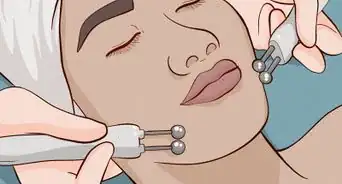This article was co-authored by Mohiba Tareen, MD. Mohiba Tareen is a board certified Dermatologist and the founder of Tareen Dermatology located in Roseville, Maplewood and Faribault, Minnesota. Dr. Tareen completed medical school at the University of Michigan in Ann Arbor, where she was inducted into the prestigious Alpha Omega Alpha honor society. While a dermatology resident at Columbia University in New York City, she won the Conrad Stritzler award of the New York Dermatologic Society and was published in The New England Journal of Medicine. Dr. Tareen then completed a procedural fellowship which focused on dermatologic surgery, laser, and cosmetic dermatology.
This article has been viewed 779,348 times.
If you forgot to wear sunscreen after a long, sunny day outside, you’ve probably developed a farmer's tan on your arms, face and neck. These tan lines are unwanted and are known to stick around for the rest of the summer, leaving it hard to wear certain clothes that make those weird tan lines visible. While it may take a week or two to remove your unwanted tan lines, it is possible to restore you skin's even tone so you can say goodbye to that unsightly farmer's tan.
Steps
Blending in Your Tan
-
1Exfoliate your skin every day to help fade your tan. Exfoliation is the process of removing the top layer of your skin's dead cells, which will help get rid of awkward tan lines faster. When the dead skin cells are scrubbed off, your tan will begin to lighten and your original skin tone will be restored.
- It may take several exfoliation treatments before you begin to notice a difference, so stay patient.
-
2Choose an exfoliation method. Exfoliating is easy and even good for your skin. With several different methods you can choose from, it really just depends on how abrasive you want the exfoliation to be. Using a loofah or wash cloth and cleansing cream, are two great methods to start out with.
- A loofah will be the most effective because of its coarse texture. However, if you have sensitive or sunburned skin, avoid using a loofah because it may cause irritation. To use, gently scrub skin in circular motions for one to two minutes and repeat once a day in the shower or bath. .
- A cream wash and wash cloth is the best method for sensitive skin, but it will take longer to work. To use, lather your wash cloth in soap and gently scrub skin in circular motions for three to five minutes once a day in the shower or bath.
Advertisement -
3Soak in a milk bath to speed up dead skin removal. Soaking in a bath with added whole milk acts as a natural exfoliator by softening the top layers of your skin. It also adds moisture back into your skin cells. After your skin is softened, it becomes easier for the dead skin cells to fall off.[1]
-
4Use lemon juice and sugar to rid dead skin cells. The acid in lemon juice may help to break down partially dead skin cells, while the texture of the sugar will serve to exfoliate. Simply cut a lemon in half, and squeeze the juice in with some sugar. Apply the mixture to a wash cloth, or your finger tips, and rub it against your skin using circular motions.
- Avoid the sun for at least an hour after doing so, or you’ll just get a darker tan.
Covering Your Tan Lines
-
1Apply a self-tanner to the sections of your skin that didn’t get tanned. This is the safer and healthier alternative to tanning using UV rays. When choosing a self-tanning product, start with a lighter color with an added moisturizer to help blend in awkward tan lines. It may be tempting to match the self-tanner to your tanned skin areas, but that would not be wise. If you apply deep tanning colors to your untanned skin, it will create an orange-y, splotchy mess with streaks on your ankles and feet which are hard areas to tan.[4]
- Moisturizing self-tanners are easier to spread and blend in.
- Gradual self tanners take about one week to work, but they will look the most natural.
-
2Get a spray tan from a trained specialist. Spray tan specialists use an airbrush to gently apply fake tan to blend in your skin tones and offer you an opportunity to get specific areas tanned in a semi-private atmosphere. These types of tans can last about two weeks and should fade away at the same rate as your natural tan.[5]
- Paying for a specialist to give you a spray tan can be costly. Consider the cost before going out to get one.
- This is a good option if you don't feel confident in applying your own fake tan.
-
3Choose a tanning bed to fix tan lines. Tanning beds can be a nice choice for convenience and total privacy. Tanning beds will also create a consistent, full coverage tan even if you have several skin tones going on. The more pale areas should be more effected by the tanning bed UV rays and after a few trips to the tanning saloon, they should catch up to your darker skin.[6]
- In a tanning bed, you can control which areas of your skin are exposed to UV rays and for how long. This will allow you to match the tone of your skin more accurately.
- Beware of the damage caused by tanning beds. Tanning beds emit the same UV rays as the sun that can lead to skin damage and cancer.
Preventing a Farmer's Tan
-
1Wear different cuts of clothing everyday. Odd tan lines are due to long sun exposure in a specific cut of clothing. By mixing up what you wear, you can expose different parts of your skin to the sun to help even your skin tone out. For example, alternate between a tank top and T-shirt so you can avoid getting a tan line across your arm and neckline. You can even consider wearing loose-fitting long-sleeve shirts or pants to keep your skin covered from the sun.
-
2Avoid being in the sun when the UV rays are at their strongest. The sun is most intense from 10 a.m. to 2 p.m. standard time. If you find yourself outside during these hours, try standing in the shade as much as possible. If shade is not an option, try keeping your skin protected with either clothing or sunscreen.[7]
-
3Prevent a farmer's tan with sunscreen. The best way to protect your skin and stop unwanted tan lines from forming when you are out in the sun is to wear SPF 30 or higher. Even after you have seen the effects of the sun on your skin, continue applying sunscreen so your tan lines don't become even darker.
- It takes thirty minutes for sunscreen to absorb into your skin and start protecting you from the sun's UV rays.[8]
- If you know you are going to be outside in the sun all day, continuously apply sunscreen to your exposed skin every hour to prevent a farmer's tan from occurring.
References
- ↑ http://www.mensxp.com/grooming/skin-care/20372-ways-to-exfoliate-your-skin.html
- ↑ http://www.mensxp.com/grooming/skin-care/20372-ways-to-exfoliate-your-skin.html
- ↑ http://beauty.blurtit.com/950782/is-tan-dead-skin-cells
- ↑ http://alphamom.com/your-life/beauty-style/how-to-camouflage-a-farmers-tan/
- ↑ http://healthyliving.azcentral.com/easy-ways-rid-farmers-tan-2644.html
- ↑ http://healthyliving.azcentral.com/easy-ways-rid-farmers-tan-2644.html
- ↑ http://www.playgroundsafety.org/safety-tips/sun-exposure
- ↑ http://www.skincancer.org/prevention/sun-protection/sunscreen
About This Article
To get rid of a farmer’s tan, exfoliate your skin every day to remove the top layer of dead skin cells and make your tan fade faster. You can also add whole milk to a warm bath and soak for 5 minutes to soften your skin and speed up the removal of dead skin. To enhance your skin’s turnover, squeeze half a lemon into some sugar and rub the mixture onto the tanned area in circular motions. If you can still see the tan line, consider using a moisturizing self-tanner on the untanned area so the line isn’t as obvious. For tips on how to choose the best exfoliant and self-tanner for your skin type, read on!

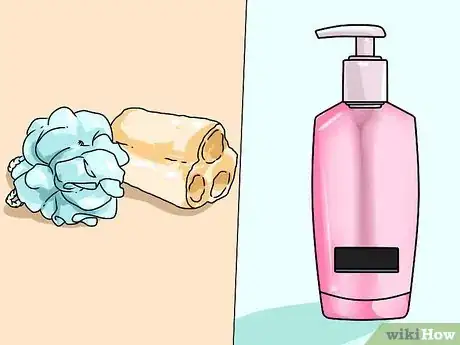
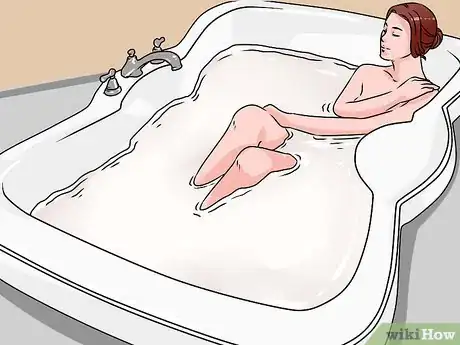
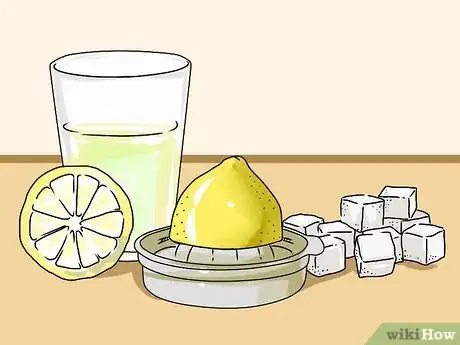
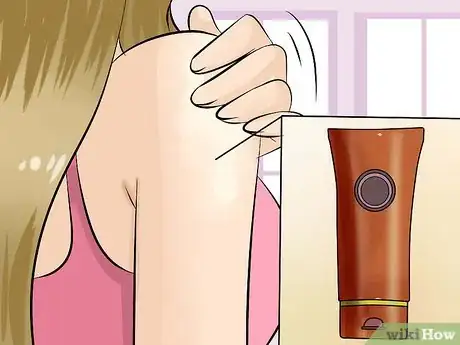

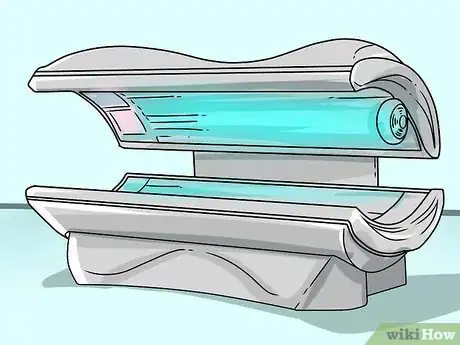

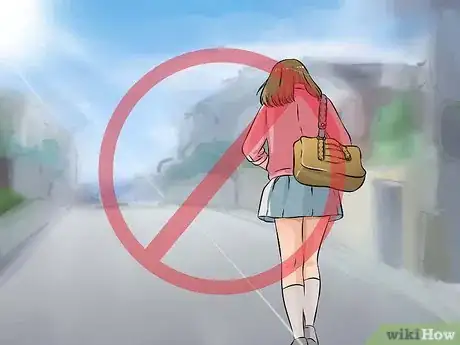
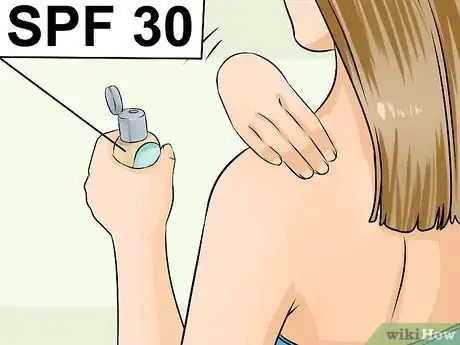




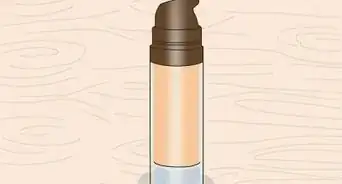
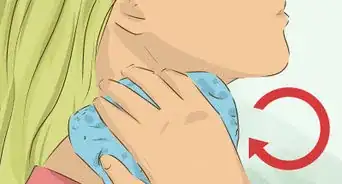




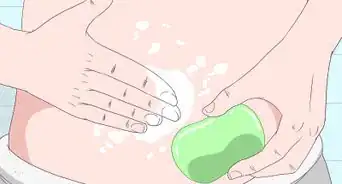
-Electric-Shock-Step-9.webp)

